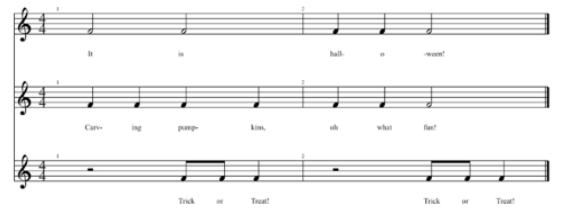Each year around 6,000 babies are born in the U.S. with Down syndrome, making it the most common chromosomal condition. Down syndrome is a disorder caused by an extra copy of the 21st chromosome, which is where the name “trisomy 21” comes from. Common physical traits of Down syndrome include small stature, low muscle tone, upward slanting eyes, and small ears. Down syndrome also causes mild to moderate developmental and cognitive delays, but these are no indicator of the amazing things people with Down syndrome can accomplish. Children with Down syndrome go to school, participate in extracurricular activities, and have friends and families like you and me (National Down Syndrome Society, n.d., para. 1)!
Deslie Quinby and Jeannie Visootsak. MD teamed up to write, “What’s Inside You Is Inside Me, Too : My Chromosomes Make Me Unique,” a story teaching kids about Down syndrome. Quinby is a mom and businesswoman who has a son with Down syndrome. She is a member of the Atlanta Down syndrome community and an active parent advocate. Dr. Visootsak is a board-certified Developmental-Behavioral Pediatrician at Emory University School of Medicine and the director of the Down Syndrome Clinic at Emory. Outside of her work at Emory, Dr. Visootsak serves on the Professional Advisory Council for the National Down Syndrome Congress and is an Advisory Board Member on the Down Syndrome Association of Atlanta (Quinby & Visootsak, 2014, p. 3).
The story “aims to inform people about Down syndrome in a full illustrative way. In the process, it also explains chromosomes and their role in making every living thing special” (back cover). The book is illustrated by Michael Johnson, making it a perfect resource for teaching kids about Down syndrome. It begins by teaching kids about chromosome pairs and how they make up who we are. Every person has 23 pairs of chromosomes for a total of 46. These chromosomes decide traits like eye color, hair color, and skin tone. When someone is born with 1 extra chromosome, they have 47 chromosomes or trisomy 21. This is called Down syndrome (Quinby & Visootsak, 2014, p. 4-16).
Down syndrome was discovered by Dr. John Langdon Down who realized he had several patients who acted and looked very similar. When making this realization, he began to notice that patients had similar facial features like upslanting eyes, a small nose, a tongue that protrudes, and small ears. The patients also had similar developmental delays. His research and discovery of these commonalities led to the disorder being named “Down” syndrome. “What’s Inside You Is Inside Me Too,” goes on to discuss that although someone may look or act different, we all have a lot in common. Children with Down syndrome feel the same emotions, enjoy the same activities, and love their friends just like everyone else (Quinby & Visootsak, 2014, p. 24).
This book is an amazing resource for parents and teachers. It can be used in the home to help parents teach their kids about children with special needs and start the conversation of ways to be a friend to someone who may seem different. It can be used in the classroom as an educational tool to teach children how to interact with their peers and be kind to everyone. The story encourages friendship and inclusion. “What’s Inside You Is Inside Me, Too,” teaches that our differences are what make us unique and even though someone may seem different, they are our friend too.
“What’s Inside You Is Inside Me, Too” contains additional resources for parents or teachers in the back. “Down syndrome 101,” discusses general history of Down syndrome, common characteristics, and health problems associated with Down syndrome. It answers questions about child development and maximizing your child’s potential, encouraging parents to become an advocate for their child. This section is also beneficial to educators or anyone working with children who have Down syndrome. The overview gives a better understanding of ways to help students and became an advocate as well (Quinby & Visootsak, 2014, p.24-27).
“What’s Inside You Is Inside Me, Too,” can be found online at barnesandnoble.com or amazon.com . We are so proud of Therabeat mom, Deslie Quinby, and the amazing work she is doing for the Down syndrome community!
-Rachel Buchheit, Music Therapy Intern
References
Quinby, D., & Visootsak, J. (2014). What’s Inside You Is Inside Me, Too: My Chromosomes Make Me Unique.
National Down Syndrome Society. (n.d.). About Down Syndrome, Down Syndrome Facts. Retrieved February 20, 2020 from http://www.ndss.org








